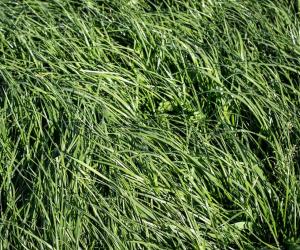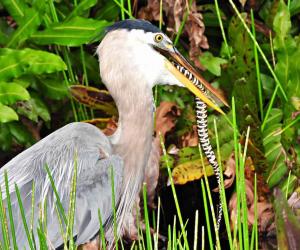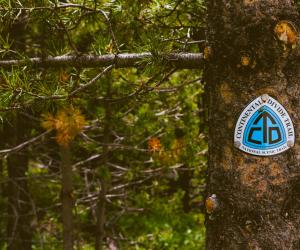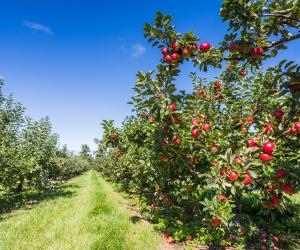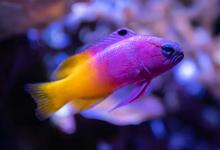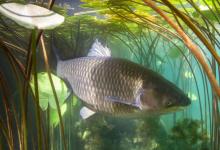Discover the Top 6 Fastest Birds in England (And Where You Can Find Them)
For millennia, humans have envied the ability to fly enjoyed and utilized by most birds. Though we’ve managed to mimic the flight of birds to some extent, birds remain the rulers of the air. Can any of our aircraft speed up, slow down, hover, go backwards and then zoom forward within seconds like the tiny hummingbird? While our planes can fly faster than any bird, there are some avians that amaze with their speed. Here are six of the fastest birds in England, and where you can find them.
1. Peregrine Falcon
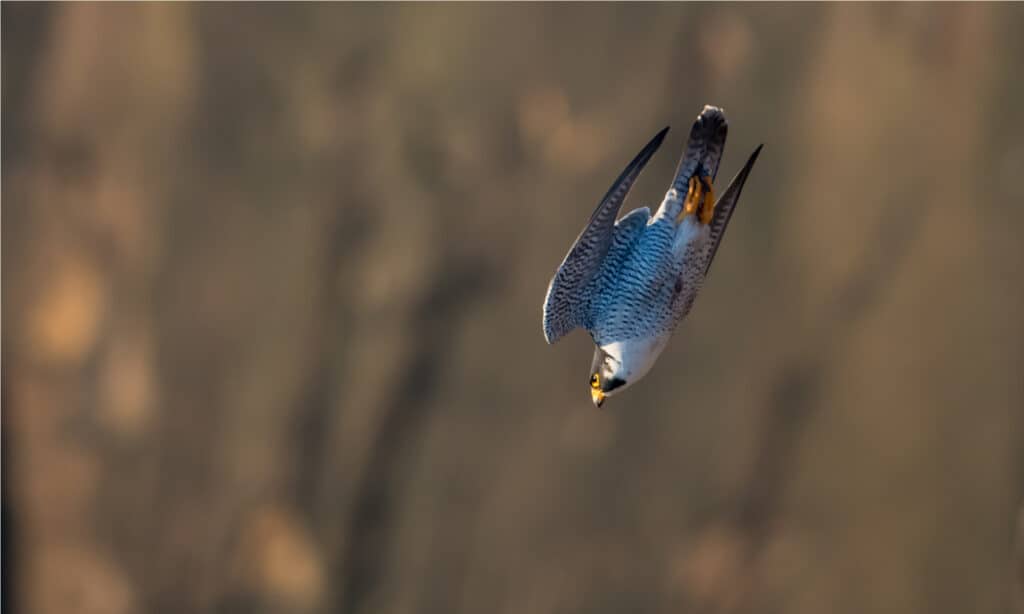
©Harry Collins Photography/Shutterstock.com
This falcon is found not just in England but all over the world. The is found everywhere save the Arctic, the Antarctic, tropical rainforests, very high altitudes, and . It can plummet through the air at a stupendous 242 miles per hour and fly horizontally at an impressive 68 miles per hour. This is due to its streamlined body and long, tapering wings.
Because it’s so widespread, there are between 17 and 19 subspecies of peregrine falcon. It is between 13 and 23 inches long with a 29 to 47 inch wingspan. Females are larger than males, which is true of many types of raptors. Their head, wings and back are slaty gray or black, and their breast and belly are white or rusty, with beautiful barring and bands. The tail is also black but banded. The peregrine falcon also has an adaptation that allows it to be a very efficient killer. Its upper beak has a notch near its tip, and this allows the bird to snap the cervical spine of their prey when they catch it. Their great speed as they dive makes an attack even more impactful.
Peregrine falcons are migratory in other places, but in England they’re permanent residents. They raise their chicks on rocky cliffs above the ocean and in upland places. In the winter, you’ll see them hunting over the marshes of the east coast.
2. Common Swift
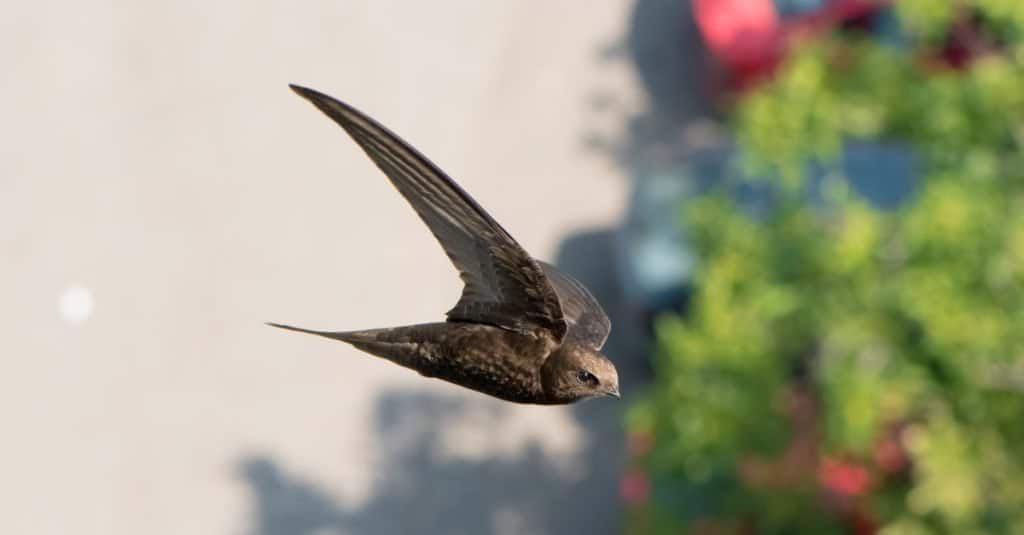
©Dilomski/Shutterstock.com
The common swift has been clocked at 103 miles per hour in a dive and a little over 69 miles per hour in horizontal flight. Like the peregrine falcon, this bird has a streamlined body helped by long wings built for attaining high speeds.
Swifts are between 6.3 and 6.7 inches long, with a 15 to 16 inch wingspan. They are sooty brown save a patch of white or gray found on the chin. The tail is short and forked. Its legs and feet are no good for perching but are excellent for clinging to cliffs and the insides of chimneys. Ancients actually believed the bird had no feet, and its name, Apus apus derives from the ancient Greek words for “without foot.” Unusual feet is a trait the swift shares with its cousin, the .
These birds are not only fast, but spend much of their lives in the air. They snatch insect prey, drink, mate and even sleep while they’re flying. Some have been known to stay airborne for as long as 10 months and fly millions of miles in a lifetime that can last 21 years.
In England, common swifts arrive in the summer to breed, mostly in the southern and eastern parts of the country. They can be seen in huge flocks over wetlands.
3. Eurasian Hobby
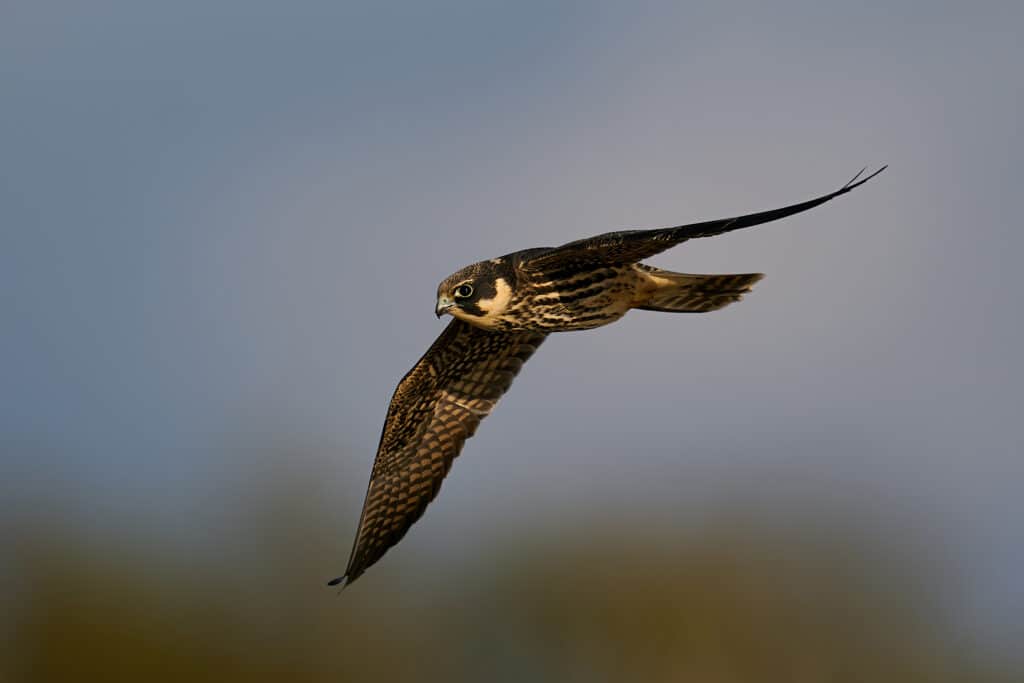
©iStock.com/denja1
The Eurasian hobby is a type of falcon that can achieve speeds of 99 miles per hour. Though it’s listed as a little slower than the swift, it is still able to catch up with these birds and snatch them out of the air as prey.
Like the peregrine falcon, the Eurasian hobby has a slaty gray back, a dark head, and a black mustache. The throat is white, the belly is white with black streaks, and the thighs and area beneath the tail are reddish. This red area is one way to tell the hobby from the peregrine falcon. Another is that the hobby is a bit smaller than the peregrine falcon. It’s 11 to 14 inches long and has a 29 to 33 inch wingspan.
Eurasian hobbies are found all around England, though they’re fairly scarce in the west. They hunt at twilight, and you’ll find them looking for their prey, which also includes large insects and , over the heaths and woodlands. There are two subspecies. One, Falco subbuteo subbuteo migrates, while the other, F. s. streichi doesn’t.
4. Red-breasted Merganser
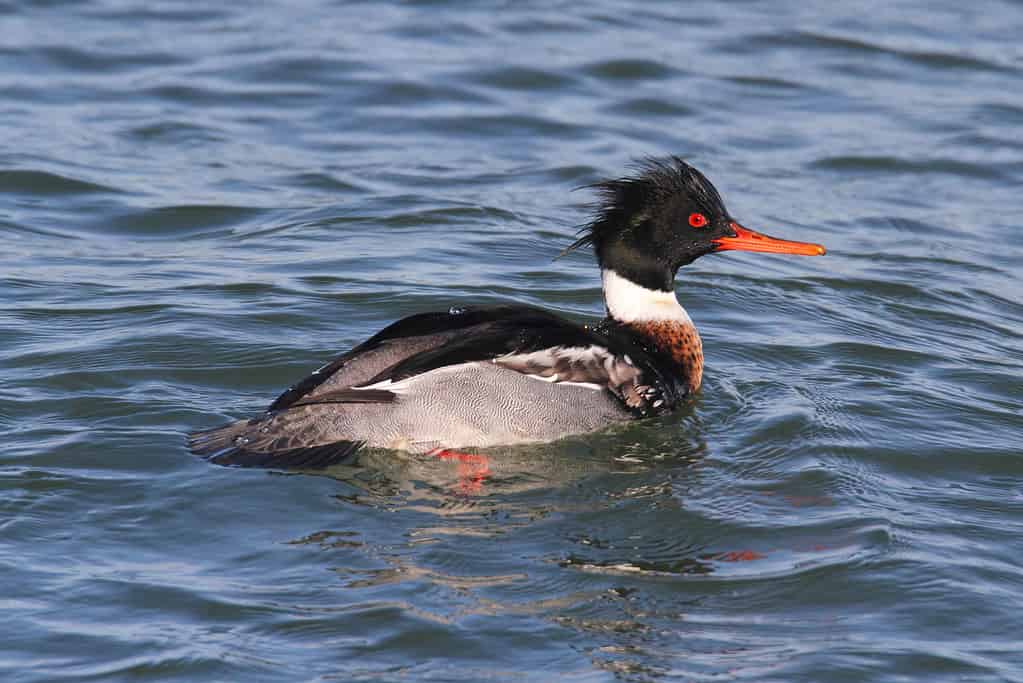
©SteveByland/iStock via Getty Images
This duck can fly 80 miles an hour, and there’s a record of a red-breasted merganser that flew 100 miles per hour to get out ahead of an airplane. It doesn’t possess the long, tapered wings or streamlined body of falcons, but gains speed thanks to . These are wings that have a relatively low drag and a relatively high lift, like the wings of a glider plane.
Despite its name, the red breast of this duck is only seen on males during the breeding season. Females always have a somewhat rust colored head and a gray-brown body, and a non-breeding male has a dark head with a greenish iridescence, white belly, black back, a white neck and a breast that’s speckled in brown. Both males and females have crests, and the bill has serrations that give the duck its species name of Mergus serrator. Mergus is the Latin name for any type of waterbird while serrator means “sawyer.” The bill helps the duck hold on to the fish that it eats. The duck is 20 to 25 inches long, with a wingspan of 26 to 29 inches.
The red-breasted merganser breeds around bodies of freshwater in northwestern England. When they’re not breeding, you’ll find them around the coasts.
5. Common Eider
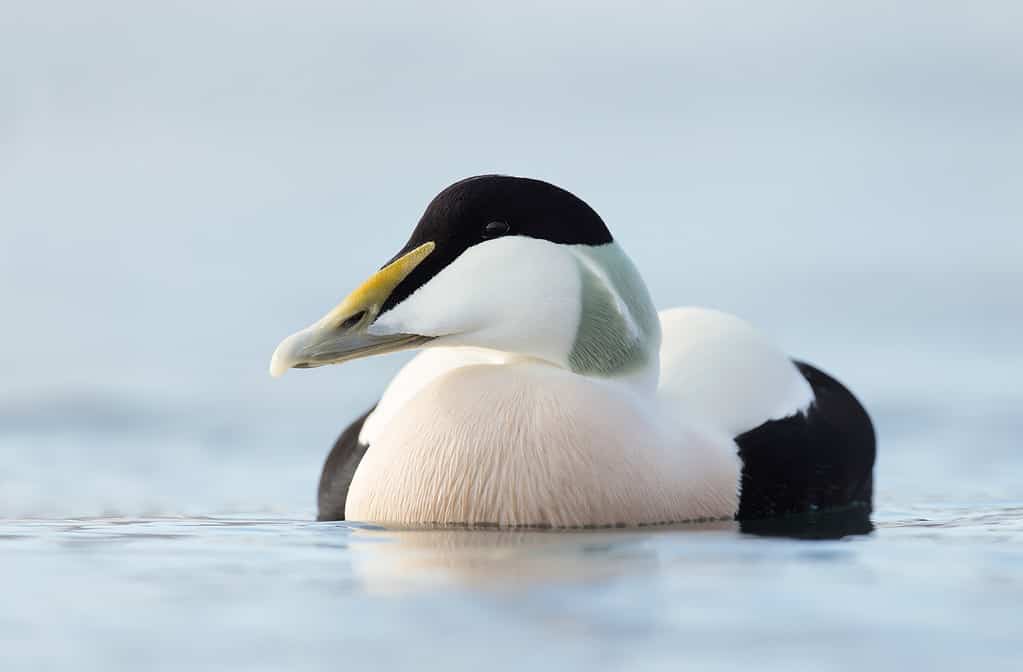
©Dgwildlife/iStock via Getty Images
The eider is also a type of duck. It can fly as fast as 76 miles an hour due to high speed wings. The eider is famous for its down, which is used to stuff pillows and comforters. Female eiders pluck their own down from their breast and use it to line their nest. Though eiders are abundant and the down can be collected with no harm to them, eider down bedding is famously expensive. The softness of the down gives the duck its scientific name of Somateria mollissima. It basically means “body of very soft wool.”
These ducks are the largest duck found in . They are between 21 and 24 inches long, with a 31 to 43 inch wingspan. A big common eider can weigh close to 7 pounds. Males are larger than females. Their flight speed is impressive given that the duck has a bulky body. Besides this, the male is mostly black and white, and the back of its neck is green. The female, like so many female , is drab brown, but she still bears the eider’s distinctive wedge-like bill and large head. There are six subspecies of common eider.
Eiders breed in northern England, and during the winter you’ll see them around the coasts. If you go to the Farne Islands in Northumberland, you’ll find a famous breeding colony of eiders. Around 676 put these birds under his protection. Because of this, eiders are called Cuddy’s ducks, Cuddy being a nickname for Cuthbert.
6. Eurasian Teal
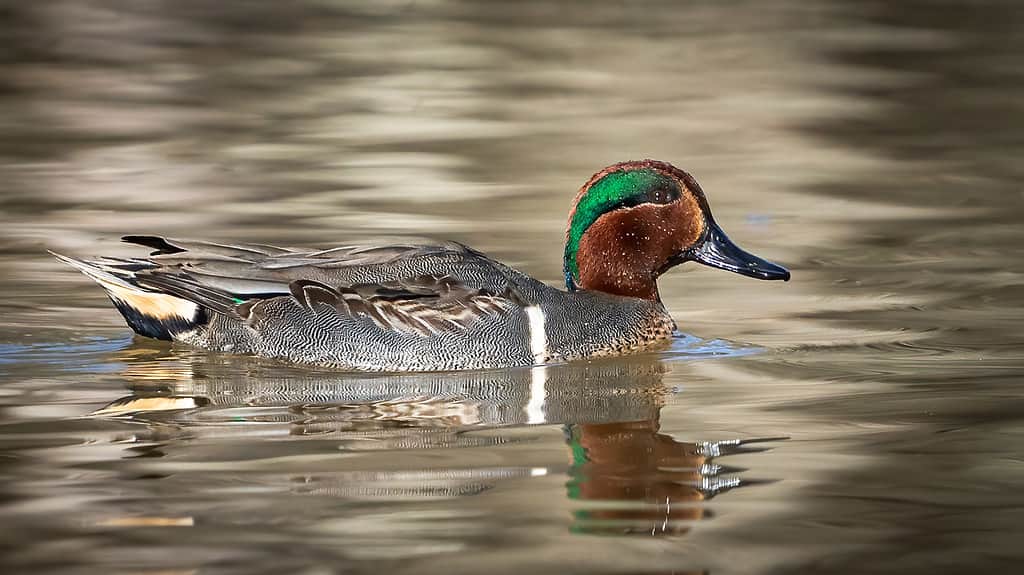
©William Krumpelman/iStock via Getty Images
This dabbling duck has been clocked at 60 miles per hour, and like the merganser its speed is due to high-aspect ratio wings. That it’s a small bird probably also helps it to be fast. The Eurasian teal can be told from other ducks that live in England because of its tiny size. It’s only 13.4 to 15 inches long with a 23 to 25 inch wingspan and weighs about 13 ounces.
The teal gives its name to the color found on the male’s head when he’s in breeding plumage and some wing feathers of both sexes. The rest of the male’s head is rusty, and his breast is buff with brown spots. His back is gray, and you can see a yellow triangle just under the tail coverts. His belly is light gray. Females are brown and tan with a white belly and chin and the teal-colored secondary feathers. Juvenile birds look like females.
Teals are found all year in English wetlands, but their numbers are low save for the winter. Then, 400,000 teals fly in from the continent, Iceland and .


